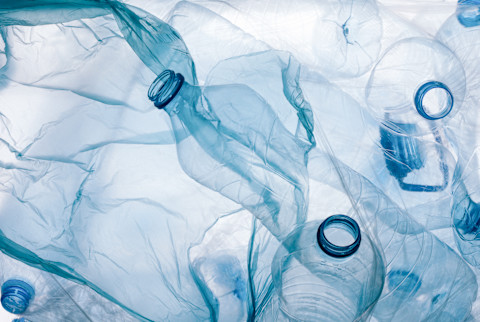Are Microplastics The Next Big Threat To Heart Health? Here's What Science Says

They're in our oceans, our food, and now—possibly—in our arteries.
A groundbreaking study1 published in the New England Journal of Medicine reveals a troubling link between microplastics and heart health. Scientists are raising concerns that these invisible particles may be a hidden factor contributing to heart attacks and strokes.
The research: microplastics found lodged in arterial plaque
In the study1, scientists examined arterial plaque from 257 patients undergoing surgery to clear blockages in the neck arteries. The results were startling: Microplastics were detected in about 60% of participants' plaques.
What's more alarming? Patients with microplastics lodged in their arteries were found to be 4.5 times more likely to suffer a heart attack, stroke, or death within the following three years.
These individuals also showed elevated levels of inflammation—an established contributor to heart disease.
Why are microplastics so dangerous?
A study, "Microplastics and Nanoplastics: The Next Frontier of Cardiovascular Risk?2" explores how these tiny plastic particles infiltrate our bodies and potentially impact heart function.
These microplastics (less than 5 millimeters) and nanoplastics (under 1 micrometer) are increasingly present in the air we breathe, the water we drink, and the food we eat, thanks to the industrial surge in global plastic production.
What's particularly alarming is their tendency to accumulate in highly vascular structures, including the heart and blood vessels. These particles have an affinity for fat molecules, which may explain how they become trapped in arterial plaque—clumps of cholesterol and fatty deposits that build up in blood vessels.
Studies have shown that exposure to microplastics can trigger oxidative stress, inflammation, and abnormal heart rates. Researchers2 also suggest that microplastics may cause damage to blood vessels, impair blood clotting, and disrupt normal heart rhythms.
How to reduce your microplastic exposure
While the research is still developing, limiting your exposure to microplastics is a proactive step you can take today. Here's how:
Filter your drinking water
Using water filters is one of the best ways to ensure your water is clean and free from harmful contaminants. Experts recommend reverse osmosis filters as the most effective way to remove a wide range of impurities from tap water, including microplastics and forever chemicals.
Avoid plastic packaging
Choose fresh, unpackaged foods whenever possible. Plastics in packaging can degrade over time, shedding microplastics into your food.
Cut back on synthetic textiles
Washing synthetic clothing releases microplastics into waterways. Consider using a washing bag designed to capture these fibers.
Reduce single-use plastics
Swap out plastic straws, utensils, and takeout containers for reusable alternatives.
Check personal care products
Some cosmetics and exfoliants contain microbeads, a type of microplastic. Look for microplastic-free options.
The takeaway
While more research is needed to fully understand the extent of the danger these particles pose, this study highlights a potential new frontier in cardiovascular risk.
In the meantime, taking steps to minimize your exposure may not only protect your arteries but also contribute to broader environmental sustainability—a win-win for you and the planet.
